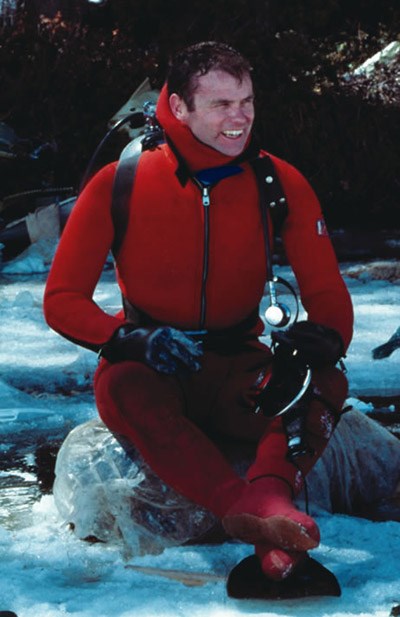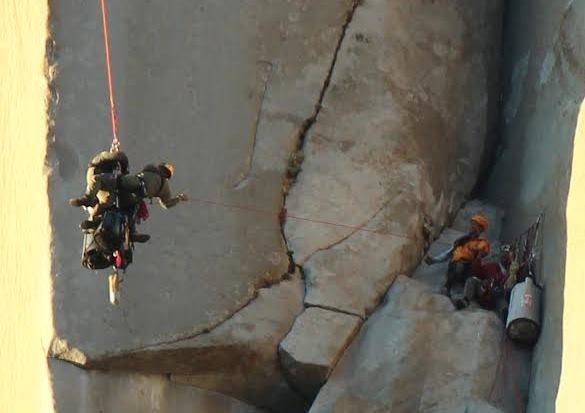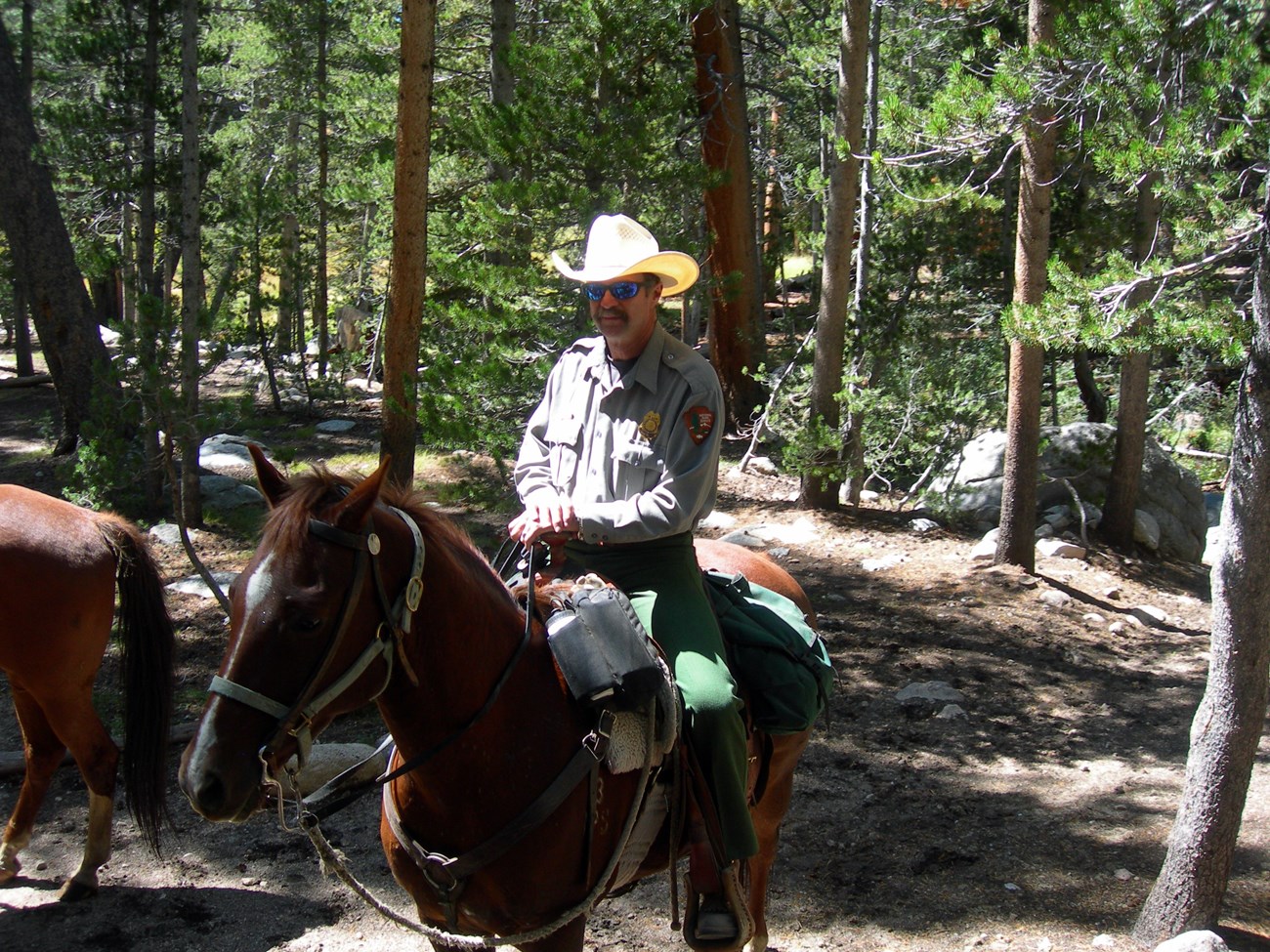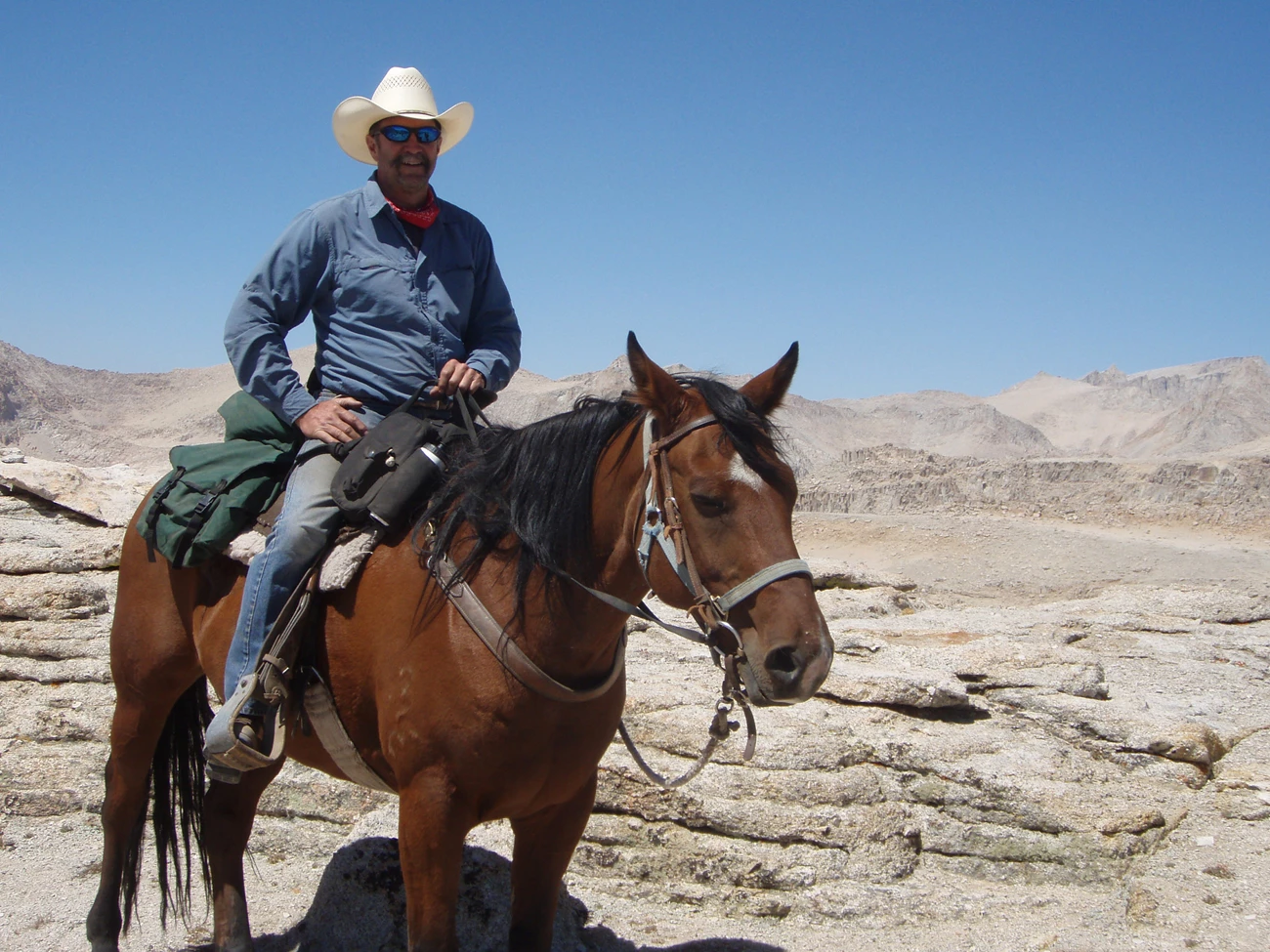"On one given day you could be jumping out of the helicopter, darting a bear, making a felony arrest, fighting a structural fire, and starting an IV on somebody—and then you could also just do the general run-of-the-mill, take a lost person report.
But it was the totality of the excitement. It was the unknown."
Listen
-
Episode One: The Helpers
In conversation with Butch Farabee and JD Swed. Who do you call when you’re in trouble in a national park?
- Credit / Author:
- NPS
- Date created:
- 11/19/2019
The Helpers: Life, Death, and Safety in our Parks

NPS
LU ANN JONES (HOST): This episode contains stories of injury and death, so sensitive listeners are advised.
There are some National Park Service rangers that visitors hope to never meet: at least under certain circumstances.
Butch Farabee is one. And he’s got a lot of stories.
BUTCH FARABEE (NARRATOR): Here is this little six-year-old, laying on the floor. He's been gored by a deer. The local rangers are working on him; there's blood everywhere.
JONES: He was performing search and rescue and emergency medicine as a ranger -- along with JD Swed.
JD SWED (NARRATOR): A Boy Scout group was up there learning to climb. Near the end of the day, one of the kids needed a couple of carabiners, so he untied one of the ropes and then tied it off with an overhand, and then took the carabiners out so he could rappel one more time. Another kid rappelled off that rope, and it just came untied and he fell to his death.
JONES: They were on the front lines helping to develop the parks’ emergency response program. This would ensure that all protection rangers got advanced emergency medical and rescue training.
Accidents happen. And often, in really inconvenient places: remote trails, steep cliffs, deep lakes, swift rivers, hot canyons. And when they did happen, that’s when Butch, JD, and their fellow rangers would get the call.
I’m National Park Service historian Lu Ann Jones, and you’re listening to “A Sense of Place: Stories of Stewardship from The National Park Service,” a podcast series about the people who shaped the parks and the Service.
Today: The helpers: life, death, and safety in our parks.

NPS
Farabee joined the National Park Service in the 1960s, Swed in the 1970s-- right as two important trends emerged.
Outdoor recreation was booming--and people went to the growing number of national parks to climb, hike, backpack, ski, swim, and boat.
Around the same time, there was a national push to make sure that first responders received standardized emergency medical training -- that they knew more than basic first aid.
FARABEE: When you went to work in the morning, you did not know what the day was going to bring. I mean, you had to know what you were doing, because otherwise you’re going to kill yourself or kill somebody else.
JONES: They did a little bit of everything.
FARABEE: On one given day you could be jumping out of the helicopter, darting a bear, making a felony arrest, fighting a structural fire, and starting an IV on somebody—and then you could also just do the general run-of-the-mill, take a lost person report, you know?
But it was the totality of the excitement. It was the unknown.
JONES: Exciting, yes. But as Farabee and Swed know, search and rescue work takes an emotional and physical toll. Sometimes rescue turns into recovery. Searching for and rescuing is one thing; dealing with the trauma of recovering bodies is another.

NPS
Farabee remembers it well.
He got a call out to Tenaya Canyon in Yosemite National Park. It was August 1971.
A missing hiker.
Farabee and a fellow ranger ascended the notoriously dangerous rock face.
The young man had been missing for almost a week. The scene is gruesome. They put him in a body bag.
FARABEE: We had to lower this deceased young man several different drops of maybe fifty, seventy-five feet vertically down to the next ramp; I think we were fairly as delicate as you could be under the circumstances, but we still had to get the job done.
JONES: The descent was tough -- it was impossible not to jostle the stretcher and the body.
FARABEE: And I'd say, "Well, jeez, I'm sorry, Rick." Of course, I wasn't making fun; what I was trying to do was do as you say, gallows humor. I was trying to protect myself and partner a little bit.
Anybody that does much of this for very long has to do that. Now at a certain point, you sort of grow beyond that as well. You become hardened enough. I don't think an ER doc or a flight nurse who sees this sort of thing all the time probably doesn’t need to protect themselves that much very often. But when you're starting out, you do.
JONES: As for Swed, he first learned how to deal with fatalities as a seasonal ranger at Yosemite. A gallows humor can be emotional armor.
SWED: The way we dealt with it in those days is that night we got around the campfire and we drank a few more beers than we did the night when those things didn’t happen. And it was a macho deal, I learned later, you know, much later.
JONES: The work can also raise thorny ethical questions.
SWED: The young woman who rolled her truck and died and her parents wanted to go to the exact location. Of course, there’s a large blood spot. I took the fire truck out there and tried to wash it all off and I couldn’t. Then, morally, I had to decide whether or not I’d take them to the exact spot because of that bloodspot. I battled with that internally for a little while to try to figure it out--I don’t know if I asked for any help; I don’t recall that--but I decided that it was best to be honest. I’ve always done that with all the deaths, and I’ve handled hundreds with the Park Service in my career now, and that’s always paid off well for not only me but for the people that I was dealing with. I just set it up for them and told them, because I didn’t think it was fair to take them to a place that was a hundred yards down the road, because they would always have the wrong spot.

NPS
JONES: Butch Farabee has hundreds of missions behind him, but there’s one that still stands out. He often tears up thinking about it.
It was November 1977, Yosemite National Park -- and a little boy is bleeding profusely after being gored by a deer.
Farabee and a park nurse were returning from another call when they heard,
FARABEE: "Do you want us to bring the EMT kit?"
I heard that, and I didn't hear the response, but I recognized the voice as being one of my friends. So I went on the radio and, I said, "We've got the park ambulance, we’ve got a park nurse, can we help you guys?" Whatever it is, you know, we're there. They said “Yeah, report up to the ranger station.”
So we got there and here is this little six-year-old laying on the floor. What has happened is he's been gored by a deer. The local rangers are working on him, there's blood everywhere, his parents are there. So, the nurse gets on the telephone, calls the clinic inside the valley, and says, "Which way shall we go?”
JONES: The doctor tells them to head toward a hospital in Fresno— eighty miles away.
Farabee is driving. The nurse and the boy’s father are in the back. The boy’s mother, sister, and a family friend are following in the car behind. The roads are curvy and slippery with ice.
They are a few miles outside of the park.
FARABEE: The nurse says, "Butch, you better pull over. I can't get this boy's pulse."
So fortunately there's a pull off and I pull in, open the back doors, and we slide a backboard underneath this little boy, and the father is sitting right there in the back seat with the kid. The car with this unknown male and the mother and the daughter slide in behind us.
JONES: Farabee and the nurse begin CPR on the boy.
FARABEE: And this unknown male comes up and says, "Can I help you guys?" I said, "Get in the ambulance, drive us, don't kill us."
We go another fifteen minutes or so and we meet up with an ambulance that had been coming up to meet us. We switch. I know that this boy's not going to live.
And as we're getting closer to the hospital, I start talking to the father. Sort of prepping him. And this man is not blind. I mean he knows what’s going on. He's been, you know, very stoic. I'm preparing him mentally, or emotionally. We pull into the ER, emergency room driveway, and they've got him out there in a surgical unit real quick.
Forty-five minutes later or so, one of the surgeons comes out and the boy is dead. And the surgeon tells me, "Even if we'd been there, I don't know that we could've saved this boy," because what had happened is this little spiked horn had gone in and clipped the pulmonary artery on this boy, right underneath the heart.
I had a three- or four-year-old boy of my own at this point. And so this was really pretty emotional for me, and for many, many nights, it wasn't like I laid awake and thought about it at every waking moment, but there were a lot of times when I'd cry myself, not so much to sleep—but my wife, bless her heart, was very sympathetic, very supportive.
I mean, that’s forty years ago, and that’s probably the one that’s the most memorable.
JONES: Farabee participated in over a thousand search and rescue and emergency medical missions before he retired. There were lives lost, but a lot more lives saved.
FARABEE: I really enjoyed it. I mean when somebody got seriously, seriously hurt or killed, then it became more distasteful. But if you can get to them and alleviate that pain and/or get them out of their predicament, that was the challenge as well. And, you know, forty years ago, the state-of-the-art equipment, techniques, training was a heck of a lot less sophisticated than it is today. But when we went home at night, you had to assume that you did the best you can, even though you might have lost somebody.
JONES: JD Swed discovered that he had a gift for comforting bereaved survivors -- a skill honed as he worked in national parks claiming some of the most challenging terrain on the planet.

NPS
SWED: When I was up in Alaska at Denali, in those ten years there was almost a hundred deaths that I helped manage or dealt with directly, so I got really good at it. I still have people who write me letters or notes on the anniversary of their loved one’s death and thank me for helping them get through that. So it’s one of those things that I really take great pride in, in how I was able to help people all those times.
There were a lot of people, especially on my staff up at Denali, who didn’t want to make that call, couldn’t make that call, and I would always take that burden. And it never seemed to be a burden to me, because I always felt that I could really help people through.
I just was able to help people.
JONES: Today, any protection ranger you meet will likely be certified in firefighting, EMS, and/or search and rescue. At larger parks, they could focus or even specialize in just one. But in smaller parks they may do it all.
When JD Swed retired in 2009, he was the chief ranger at Sequoia and Kings Canyon National Parks in California. When Butch Farabee retired from the National Park Service in 1999 he had served as the agency’s emergency services coordinator and had received the Harry Yount Lifetime Achievement Award, given to those who exemplify the rangering tradition.

NPS
“A Sense of Place: Stories of Stewardship from the National Park Service.” I’m your host, Lu Ann Jones. I conducted these interviews in October 2012 at the Ranger Rendezvous in Indian Wells, California. They were completed for the Association of National Park Rangers Oral History Project.
If you’re interested in more behind-the-scenes stories of the search and rescue life, check out Butch Farabee’s book, Death, Daring, and Disaster: Search and Rescue in National Parks. It’s a must-read.
This episode was produced by Emma Courtland and Robin Miniter, with assistance from Marcelino Vialpando, for the National Park Service. Music by Blue Dot Sessions.
Last updated: June 9, 2022

